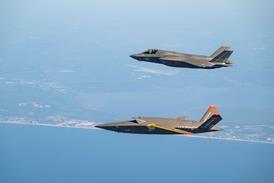A preliminary accident report from the US National Transportation Safety Board into a Cirrus SR20 light aircraft crash in Lexington, Kentucky, last month points to the operator's failure to implement a service bulletin for deployment problems with the aircraft's parachute.
The Cirrus Airframe Parachute System (CAPS) is designed to glide the aircraft to safety, following an engine failure. The report states that the owner-pilot pulled the CAPS activation handle repeatedly, but the cable did not extend and "nothing seemed to happen". Despite maintaining an airspeed of around 130kt (240km/h), the pilot was able to land the aircraft in a field 3nm (5km) from Lexington airport. The CAPS canopy deployed when the aircraft hit a tree and both passengers escaped unharmed. Initial examination of the wreckage showed the system functioning normally, but the pull- forces to activate the CAPS parachute varied significantly during post-accident testing.
Earlier this year, Cirrus discovered an unrelated cable problem with the CAPS which resulted in a US Federal Aviation Administration airworthiness directive being issued on 25 February. While investigating that problem Cirrus found an issue with pull-forces required for the CAPS, and the manufacturer released a service bulletin at the end of February.
That fix reduced the pull-force needed to activate the system from 27-55kg (60-120lb) to a maximum of 25kg. This bulletin, considered "mandatory" by Cirrus, was not complied with by the owner-pilot involved in the SR20 crash.
Meanwhile, SR20s have been simultaneously delivered to customers in Australia and Canada, following certification in both countries. The Transport Canada type certificate included modifications to the user manual and cockpit placards, which have also been included for US deliveries.
Australia's Civil Aviation Safety Authority required modifications to the aircraft's fuel-tank earthing prior to awarding type certification. Alan Klapmeier, president and chief executive of Cirrus Design says: "These deliveries are just the beginning of our efforts to product aircraft to national specifications worldwide."
JAA certification, which stalled after the company suffered financial difficulties last year, has resumed, the company says. Cirrus hopes to secure European certification before the end of the year, despite Europe requiring further testing of spin and stall characteristics.
Source: Flight International























